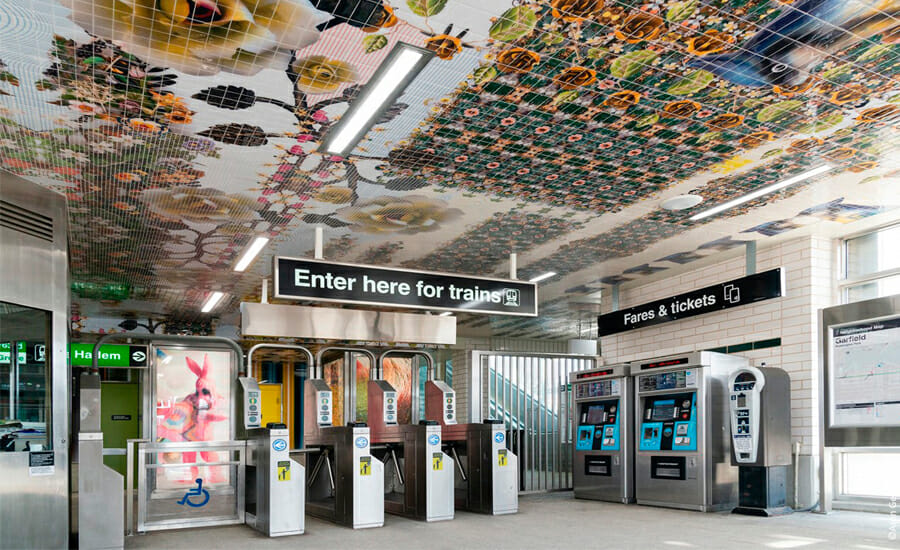From aviation and transit to bridges and roadways, our teams dedicate themselves to advancing sustainable infrastructure for communities. Our transportation projects offer unique opportunities for professionals to stand at the intersection of innovation and human-centered design. When the global pandemic changed the landscape of transportation and revealed systemic vulnerabilities, our professionals adapted, offering clients tailored solutions to collaboratively navigate the uncharted terrain.
“The global pandemic has certainly posed new challenges to transportation operations. It is one more challenge that our team of architects, engineers and planners address every day in creating more accessible, efficient, safe and reliable transportation solutions. We’re creating something that is enduring and contributes to the character of cities and neighborhoods they serve and to the people whose lives are touched by the project,” notes senior vice president, Building + Industry, Jefrey Jakalski.
First stop: transit
“Transit projects offer a unique opportunity for designers to collaborate with communities to add value to our built environment,” mention architects Alzira Maldonado Protsishin and Victor Jimenez. “The goal of transit is to serve everyone equally. To accomplish this, we must understand the project elements required for success, including safety, budget, operations, maintenance, accessibility requirements and neighborhood character. Once we have established the project goals, we strategize how to implement these solutions to create a design that responds to the community and shapes station identity. This approach produces a strong relationship between the transit stations and the communities they serve, while also enhancing mobility, transportation system performance and the quality of life.”
As seen at the South Mainline Garfield Gateway Station, EXP worked with the Chicago Transit Authority to renovate the historic stationhouse to improve service and accessibility for transit riders, bicyclists and pedestrians. To meet the City of Chicago’s Public Art Program objective to establish a stronger link between transit and the community, EXP worked with renowned Chicago artist Nick Cave to integrate mural-styled artwork with the project’s architectural features. The station is now more than a stop – it is an immersive experience.
The commitment to connecting communities through purposeful infrastructure is evident in our projects throughout North America, from Chicago’s Red-Purple Modernization Program (RPM), Belmont-Jefferson Park Blue Line Stations to Atlanta’s MARTA Five Points Station, LA’s Streetcar Project and many others. We’re also exploring possibilities on Toronto’s Hurontario and Eglinton Crosstown LRT projects and on Montreal’s Peel Street redevelopment (pictured right) and metro Blue line extension projects.
More than meets the eye
While plenty of our transit projects have awed onlookers aboveground, the Eglinton Crosstown West Extension – Advance Tunnel Project offers solutions that are less conspicuous. As one of the largest, most ambitious infrastructure projects in North America, the 5.7-mile (9.2 km) extension project will improve mobility, traffic congestion and emissions by going underground.
“This project offers a much-needed solution for Toronto by improving access to transit and job opportunities for the community. A critical component of the project is reducing travel time and helping passengers get to where they need to go. Understanding the reduction in delays is important, our structural and geotechnical teams bring the expertise to help mitigate potential impacts of tunnel construction on adjacent structures and utilities – impacts that would otherwise create delays and prolong disruptive construction for commuters,” says executive vice president, Major Projects, Reece Bailey.
Connecting the dots
Our projects strive to eliminate gaps to meet today’s and tomorrow’s needs. We look at how people move, the means by which they do it and re-imagine our environment to nurture harmonious relationships between humans, the cities we build and the greater world we live in. We harnessed these ideals to revamp one of downtown Montreal’s busiest streets, Peel Street. At the forefront was a need for accessible and integrated routes for cyclists, pedestrians, motorists and public transit. EXP was tasked to tackle this infrastructural problem with a human-centered approach. Today, cyclists have raised, paved paths and synchronized traffic lights to support safety, as well as bus shelters for cohabitation with varying modes of transit. Whether in Chicago, Toronto or Montreal, you’ll see how EXP is paving the way for communities to feel more connected to their cities by easing how they travel within them.
While the destination is important, the journey of how we get there is where living happens. Through community-centered designs that focus on safety, accessibility and sustainability, we’re helping to eliminate public infrastructure gaps and connect communities to what matters to them most.
Learn more about EXP’s projects here.
*Originally published in EXP’s Expresso: Shaping Tomorrow

